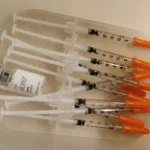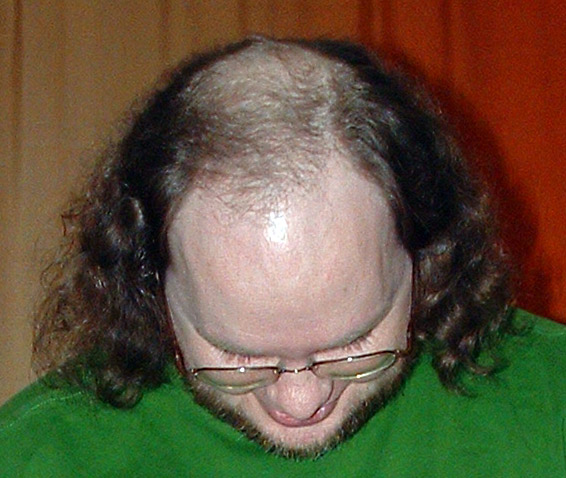What can you do to maximize your hair count and hair quality? Why is hair count much more important than quality? In this post, we will give a quick overview of all your options for making the best out of your headspace.
Table of Contents:
Haircount vs Hair Quality
Hair Count is the sum of all your visible scalp hair. There is, in fact, hair, that is hard to see, but is technically still there (I‘ll talk about it in another post). What’s important is that all males will experience some form of male pattern baldness and might have to think of ways to increase their haircount. Haircount is VERY important for attracting women, as seen in various studies1 2.
What I mean by hair quality on the other hand are the properties of the hair itself: How thick, how curly, how shiny is it? And while you can make your hair more curly and a good haircut will obviously improve your success with the ladies, beauty is really subjective here. Some women like it curly, some like it straight, some like it shorter, but most like it a bit longer (speaking from my own experience here). It should just look clean but also not dried out.
So I won’t waste your time by talking about the latest cut or how to make your perfectly fine straight hair look like pubic hair, even though that’s what a lot of young guys want to do these days.
Non-invasive methods to increase hair count
In the following, I will present to you the most important things you can use to increase your hair count via chemical processes or compounds. Everything on this list might make a noticeable difference for your hair:
- Topical Minoxidil – Would almost always recommend this due to its low side effect profile, low cost, and moderate efficacy
- Oral or topical Finasteride/Dutasteride – Would only partially recommend this due to possible side effects like Gynecomastia and low libido. I myself experienced these side effects and stopped after 6 months, which reversed all negative symptoms. Finasteride has the highest efficacy out of all hair loss drugs, so if you can tolerate or just don’t experience the side effects, this might be your „holy grail“
- Ketoconazole Shampoo – Research is very limited, but it’s very safe, and if you have undetected or subclinical seborrhoic dermatitis, definitely worth it. Efficacy is very low though
- Microneedling – You’re basically pushing small needles into your scalp to increase blood flow. Barbaric? Maybe. Effective? YES. Some research suggests it’s even more effective than Minoxidil
- Botox – Research is again very limited, but a systematic review showed a solid efficacy with an increased hair count of 18-20%3. This and the fact that you only have to inject it once every 3-6 months makes this treatment a no-brainer. Cost can vary a lot, but expect around 400-600€ per treatment
Not recommended:
Pyrilutamide (too expensive, research doesn’t seem too promising as of now).
RU-58841 (works, but low to moderate efficacy and higher risk of heart-related side-effects).
Invasive methods to increase haircount
You might’ve guessed it, but there is only on invasive method, and that is a hair transplant. A hair transplant will (best case scenario) stay for life. It may cost a few thousand, but it’s much more cost-efficient than probably any other method on this list. There are two procedures commonly used:
- FUE – stands for Follicular Unit Extraction, extracts single hairs at the back of your hair, risk of scars is very minimal. You probably won’t see anything at the extraction site after the transplant
- FUT – hair is removed from the back of your scalp in a strip. You WILL see a scar and it also has no advantages compared to FUE, so don’t do it. Just don’t
And that wraps it up for this post. If you want to learn more about Hairmaxxing, please visit the Hairmaxxing section or click on the listed methods for more information about them (Coming soon).











Leave a Reply